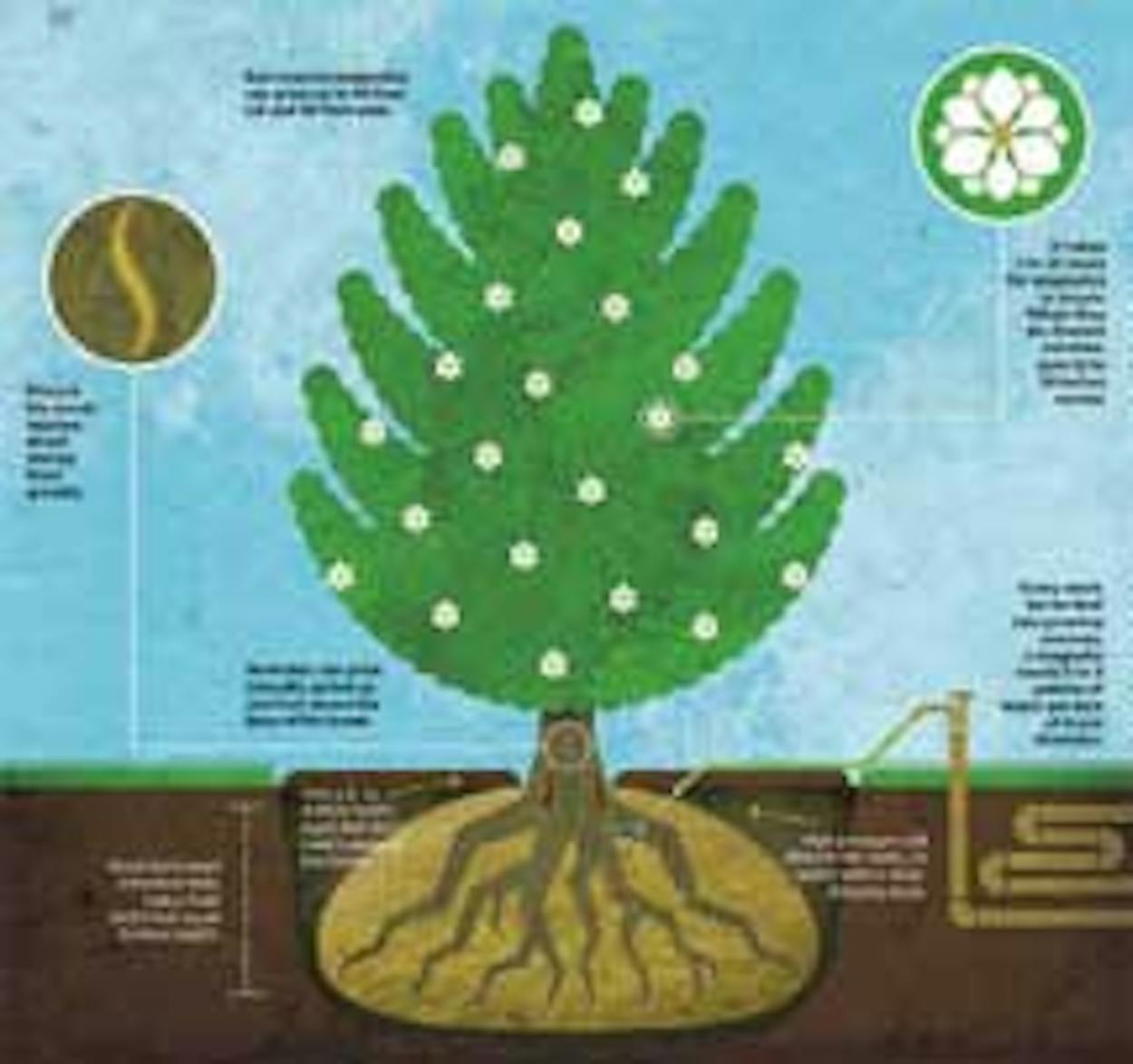The pecan may be our state tree, but the Magnolia grandiflora, or Southern magnolia, has long been the belle of our arboreal ball. With its dramatic canopy, glossy leaves, and creamy blooms, this elegant evergreen is the centerpiece of many Texas gardens. Where does it thrive? “Magnolias prefer warm, rainy climates and well-draining soil,” says Pete Smith, the coordinator of the Big Tree Registry for the Texas Forest Service. “They also need plenty of room to grow—at least one hundred and eighty square feet.” To begin, search for a solid sapling with lacy, tender white roots (an indicator of good health) and lots of leaves (more photosynthesis means faster growth). Proper planting is essential. Poorly established magnolias are bound for the fragrant forest in the sky.
• Sun-craving magnolias can grow up to 90 feet tall and 40 feet wide.
• Protect the trunk: Injuries divert energy from growth.
• Branches can grow laterally, as low as one foot above the base of the trunk.
• Root-balls need a modest hole, twice their width but equal to their depth.
• Add a 2- to 4-inch mulch layer, but don’t mulch against the trunk.
• High pressure will disturb the roots, so water with a slow-dripping hose.
• It takes 3 to 10 years for magnolias to bloom. When they do, flowers can measure 12 to 14 inches across.
• Every week for its first two growing seasons, a magnolia needs 5 to 8 gallons of water per inch of trunk diameter.








